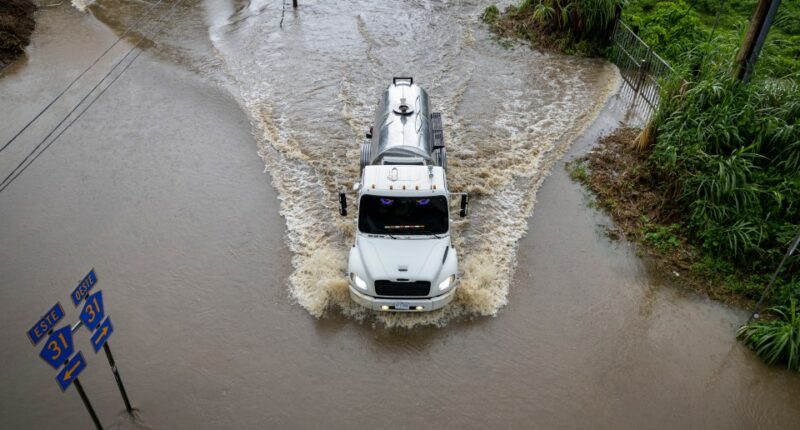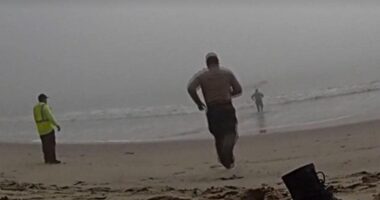Share this @internewscast.com
Tens of thousands faced power outages after Hurricane Erin struck the Caribbean, with the storm still predicted to gain strength as it moved towards the US.
Now rated as a category 3 hurricane, Erin unleashed heavy rains and fierce winds across Puerto Rico and the Virgin Islands on Sunday, leaving approximately 100,000 residents without electricity.
According to Luma Energy, the private electricity provider in Puerto Rico, most residents regained power by Sunday afternoon.
The operator said on X: “As of 5:00 p.m., 92.5% of customers have electrical service.
“The affected areas are mainly in Arecibo, Caguas, and San Juan as the rain bands continue to exit Puerto Rico.”
They added: “Our crews are working with precision to ensure safety and continuity of service.”
The storm caused “multiple interruptions across the island”, the company said earlier.
Hurricane Erin also saw two divers swept amid powerful waves near St. Croix in the US Virgin Islands.
They had to be rescued by local crews on Sunday, authorities announced.
Shocking footage showed taken by St. Croix Rescue Chief Jason Henry showed the divers being dramatically hauled over onto a boat.
On the island of Sint Maarten, footage showed palm trees swaying in violent winds.
Its local government said cleanup crews were clearing debris since Sunday morning.
A large amount of Sargassum seaweed also reached the shore – which could contain harmful toxins poisonous to people and marine life.
Erin has been labelled category 3 after multiple fluctuations in the last several days.
On Saturday it was considered to be a catastrophic category 5 hurricane.
Outer bands are continuing to sweep over Puerto Rico and the Virgin Islands, pummelling coasts with heavy rain and strong winds.
Rainfall was recorded between two and four inches.
Up to six inches is likely to fall in some areas.
Fears are mounting that this could lead to flash flooding or mudslides.
As of 5pm local time on Sunday, Erin was 275 miles north-northwest of San Juan, Puerto Rico.
It had maximum sustained winds of 125mph, and is reportedly currently moving west.
Puerto Rico Governor Jenniffer González-Colón warned residents to stay home if possible.
Though flooding hasn’t been reported yet, officials warned that the worst weather conditions could hit the region within the next six hours.
Terrifying footage on X also showed heavy rain falling in Cidra in central Puerto Rico on Sunday.
The hurricane is expected to strengthen in the next two days before taking a north-ward turn on Monday and Tuesday.
The storm is then forecast to gradually weaken through the middle and latter half of next week as it passes between the US and Bermuda.
Tropical storm warnings have been issued in Turks and Caicos and the southeast Bahamas, according to authorities.
In Sierra Bayamón, Puerto Rico, a suspension insulator broke and a conductor fell to the ground because of the stormy weather.
Luma Energy also advised the public to avoid walking or driving through flooded areas, especially near downed power lines.






















